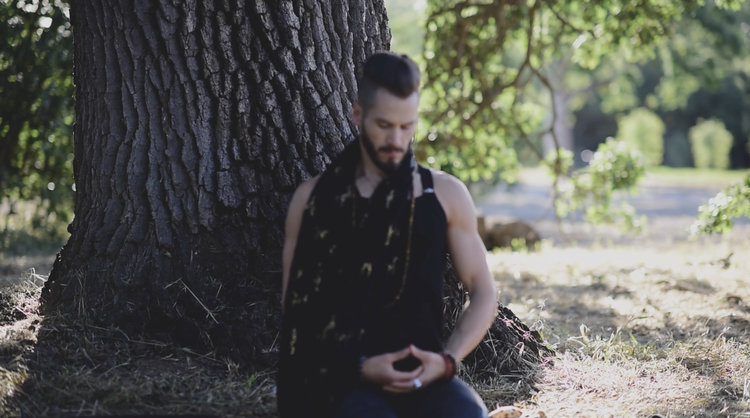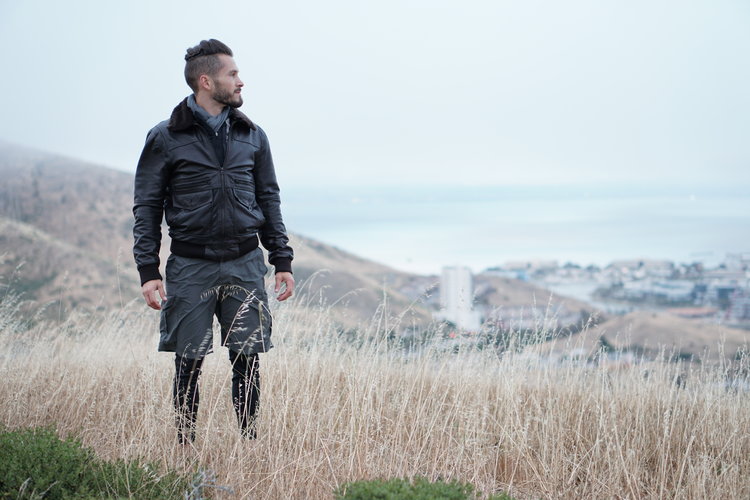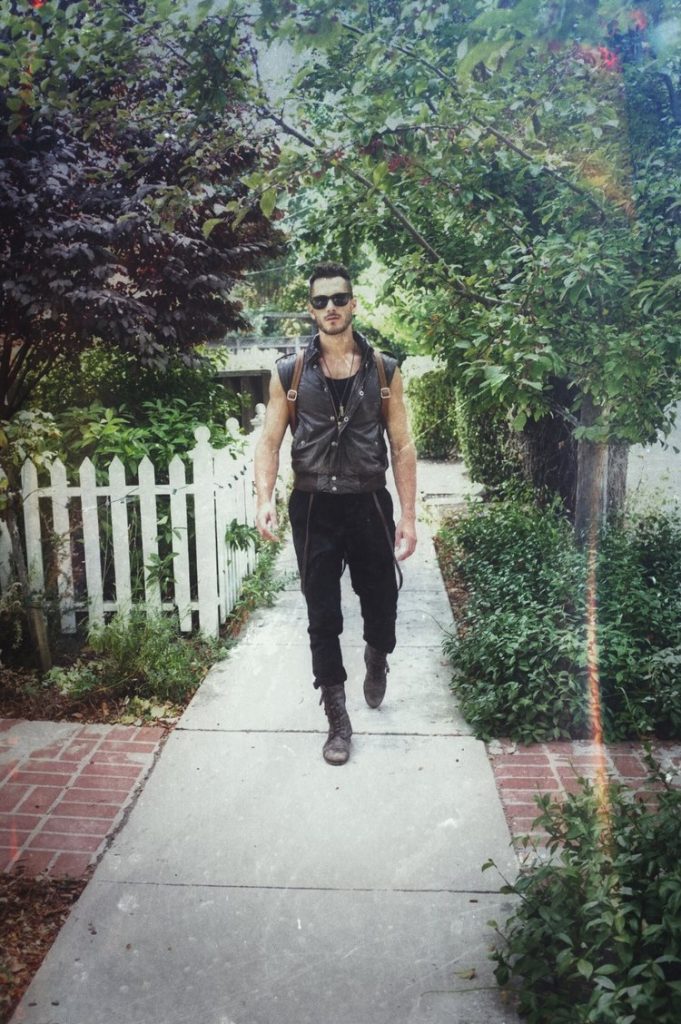One of the key facets of Oh My Green’s company culture is meditation. Here in our Bay Area office, we have a dedicated meditation room, where many of us visit for up to 20 minutes, twice per day. The practice has been such an invaluable way to stay focused and get re-energized that Michael, our CEO, leads a group meditation session every Tuesday afternoon. For a minimum of 15 minutes, we’ll gather in a conference room as we silence our phones, close our laptops, and take the opportunity to center ourselves.
Of course, this isn’t the only way to meditate, and no one understands this better than Oh My Green’s very own Head of Connections, Justin. In his below featured post, he explores the different ways of meditating that are for meditation novices and pros alike. For more of his tips, practices, and thoughts on wellness, visit his personal blog Alchemize Life.
The Four Universal Forms of Meditation: Why Sitting Isn’t The Only Way To Meditate
Can’t stand the thought of sitting for 20 minutes to meditate?
Can barely fathom sitting still for even 5 minutes?
Does your brain & body hurt just thinking about trying to sit & meditate?
Is your consciousness f***ed?!
Definitely not. Maybe your mind, body & emotions are calling for a different mode of meditation. One that accesses another physical posture other than sitting.
There are other modes of meditation that are just as powerful and harness different, equally important, aspects of human development.
Even if you have been hardly awake the last few years, chances are that you have noticed that meditation has become popular in our society. If you haven’t noticed and are reading this then you are now caught up with the rest of us. :)
Honestly, it seems like there has been an epidemic of meditation in the U.S. in recent years. All of the en vogue celebrities & gurus are touting it, there are numerous meditation apps available, and many companies offer it to their employees as a benefit (mine does).
I think it’s awesome that we have reached a point in our society where the emphasis on the development of our consciousness is widely accepted and encouraged. Definitely a tipping point in our evolution as a species in my opinion.
But what if you’ve tried traditional seated meditation and for whatever reason can’t stick to it or cant stand it no matter how many times and types you’ve tried… ?
According to the late Angeles Arrien, PhD, there are four universal forms or postures of meditation found among almost all societies across the globe and throughout our collective history.
If seated meditation has not been working for you, maybe you are trying too hard or maybe it is time to embrace one of the other ways below. Chances are you already do one or more without even realizing it.
The Four Universal Forms (or Postures) of Meditation:
1. SEATED MEDITATION
According to Arrien, seated meditation accesses WISDOM. Something all of us could always use more of.
Seated meditation embodies the Teacher-Archetype.
Think of the great wise teachers throughout our history — Ghandi, Einstein, Confucius, Lao Tzu, Buddha, Aristotle, Socrates, etc. All of them spent a lot of time in seated meditation. Within they found deep & profound insight that they in turn shared with the world, elevating all of us to higher states of consciousness and greater ways of being in our shared-world.
For many of us, these figures may appear to be superhuman and beyond our personal relate-ability. This is often due to the fallible thinking of comparing one’s place on their journey to the journey of another. This kind of thinking almost always creates self-doubt and leads to stagnation.
I believe we all have something to teach & we all have innate wisdom that we can tap.
I also believe that we often make things way too hard. Especially, seated meditation. I was guilty of this. Making things harder than they need to be is something I constantly have to guard against (see here for insight on how I’ve began to overcome this life-challenge).
The seated form is what most people think of when they hear the word meditation. And unfortunately many of us think that if we cannot sit cross-legged or in full or half lotus pose then we are not cut out to meditate. I was one of these people up until about 2 years ago.

Many people can’t sit crossed legged, in lotus, or upon their shins in the traditional Japanese sitting posture “seiza” (see picture above) for more than a few minutes without experiencing mild-to-major discomfort (myself included unless I have been practicing yoga regularly).
Fortunately, I discovered that sitting in some “proper” way is just societal conditioning & the over-marketing of how meditation “should” look. This was spawned from our idolization of those monastic people who spend all day doing yoga, martial arts and seated meditation. People who have deliberately physically trained their body to sit for long periods of time in “traditional” seated meditation postures.
In truth, if you can sit in a regular chair or couch or can sit upon a bed with your back against the headrest and your legs stretched straight out in front of you (my preferred way) then you can do seated meditation. The key to seated meditation is to keep your spine & neck straight, but relaxed. Almost everyone can find a sitting position that personally works for them that achieves proper spinal alignment.
2. LYING MEDITATION
This is another important posture of meditation that we often forget about. Or we don’t realize that it is an awesome way of meditating because we associate it with sleeping.
And in our society if it is too easy or not difficult enough then we faultily think that we are doing it wrong or that it isn’t working.
Lying meditation is all about HEALING & LOVE, keeping with Arrien’s framework. Intuitively, this makes a lot of sense. It is what most of us do naturally when we feel physically unwell. It is also what we do with our loved ones to cultivate love. Also known as snuggling or cuddling.
This form of meditation is part of the the Healer-Archetype.

We can use this posture of meditation to heal beyond just the physical aspect of our nature. Mental, emotional, and spiritual healing can be accessed and accelerated in this position.
Shivasana, aka corpse pose, is used in most yoga classes and is probably the most common form of lying meditation.
Lying massages of all types can also be used to meditate. I’ve personally experienced many transcendental moments during a great massage.
Another, more advanced, but fairly accessible modern day version of this lying form of meditation is Holotropic Breathwork, pioneered by Stan Grof.
“Holotropic Breathwork is a powerful approach to self-exploration and healing that integrates insights from modern consciousness research, anthropology, various depth psychologies, transpersonal psychology, Eastern spiritual practices, and mystical traditions of the world. The name Holotropic means literally “moving toward wholeness” (from the Greek “holos“=whole and “trepein“=moving in the direction of something).
The process itself uses very simple means: it combines accelerated breathing with evocative music in a special set and setting. With the eyes closed and lying on a mat, each person uses their own breath and the music in the room to enter a non-ordinary state of consciousness. This state activates the natural inner healing process of the individual’s psyche, bringing him or her a particular set of internal experiences. With the inner healing intelligence guiding the process, the quality and content brought forth is unique to each person and for that particular time and place. While recurring themes are common, no two sessions are ever alike.”
To date I’ve undergone two Breathworks and both times had incredibly healing and transformative experiences. I was blessed because my Mom is trained in this particular healing modality. [Send her an email if you live in WA and are interested otherwise see here for worldwide Breathwork events]
This type of lying meditation may sound a bit out there, but it’s growing in acceptance. Founder & CEO of Whole Foods, John Mackey, speaks openly about Breathwork’s transformative power in The New Yorker.
Ayahuasca, LSD & magic mushrooms have grown in popularity among the in-crowds the last few years in our ongoing humankind search for healing & meaning. Breathwork is an awesome way to discover this and reach similar (or better) altered states of consciousness without taking drugs. Unlike drugs, there are no negative side-effects with Breathwork.
3. STANDING MEDITATION
Standing meditation is rarely openly discussed in our current culture, yet it is incredibly powerful.
In a way, standing meditation has been repackaged into “power-poses” and standing affirmations. Two ideas that are talked about more often in our society.
I like to picture myself in a powerful superman silhouette upon a sky-scraper looking upon the city with the wind holding my cape afloat.
Or sometimes I picture myself upon the ledge of an Arizona red-rock cliff with the camera doing a 360-degree pan.
And sometimes I stand in a classic Wolverine pose in front of the mirror and just harness wild-beast energy.
Standing meditation accesses PRESENCE and cultivates our ability to honor boundaries and limits, as stated by Arrien.
This is the meditation of the Warrior-Archetype. Something that has always been programmed into our consciousness.
Throughout history and all civilizations we as a human species capture this warrior energy in our pictures, paintings, and statues of powerful humans in powerful poses.
Heroic statues stand guard around the globe. They often mark the entryway to our homes, institutions, various sacred areas, and even our country (statue of liberty).

4. WALKING (OR MOVING) MEDITATION
Walking and moving meditation accesses INNER CREATIVITY (VISION) and it harnesses the Visionary-Archetype.
It should come as no surprise that many of mankind’s most visionary artists, writers, scientists, and thinkers had a daily practice of moving meditation. Many of them were habitual walkers.
Mason Curry covers many of these famous minds and their daily moving meditations in his book Daily Rituals: How Artists Work.
Moving meditation can also come in the form of cooking, cleaning, swimming and various physical sports.
I even think driving can be a moving meditation. Not stuck-in-traffic-driving, but the kind where you are cruising along.
Same goes for bathing in the shower, a place where ideas seem to flow through our bodies like the water cascading over us.
There is something magical about moving and letting your mind unwind itself. Whether it’s working through a current problem and finding a creative solution or ideating for all areas of life there is something naturally powerful about meditative movement.
Whether by conscious design or happenstance we have all had this experience and as Arien states, “When our body is moving & open, we become vehicles for creative problem-solving.”
Many cultures use this type of moving-meditation to reclaim one’s authentic Self. Aboriginals of Australia have their “walkabouts” and Native Americans use “vision quests”. Even in our modern day, people of many first world countries go “backbacking” through Europe or road trip through America to rediscover themselves.
Through movement we can remember who we are and why we came here.
No matter the type of preferred movement we can all get into altered states of consciousness. The trick is to notice which ones work especially well for you in your life as it is right now.
If you have the time and resources to go on vision quest, walkabout, backpack, road-trip, etc. Go take a journey that reconnects you with your Self.
If an extended meditation of that type doesn’t fit your life how can you cultivate moving meditation in your life today? It’s fairly easy if you don’t make it harder than it needs to be.
I go on walks and ride my bike daily. I body-build and practice yoga weekly as well–two more awesome moving meditations.
Friends of mine practice martial arts like kung fu & tai-chi.
My fiance goes to SoulCycle and has regular “spiritual experiences” and emotional breakthroughs during class.
Runners and marathoners are classic modern moving-meditators.
My fiance and I rollerblade together. Another favorite moving meditation of mine. It feels like flying to me and my mind always feels free & expansive as I journey through urban landscapes.
Hiking through nature is another personal favorite moving meditation. Whether in the foothills, through a park, deep in the mountains, or along a beach. [Side Tangent: Nature is an especially powerful amplifier and cultivator of all types of meditation.]
Moving meditation empowers me to remember what has heart & meaning to me in my life. It helps me remember who I really am and always provides creative answers that are endowed with personal integrity. Answers that help me move through whatever beguiling situations I find myself in during the course of my time here.

Alchemical Learnings:
- Meditation is a natural phenomenon that everyone experiences.
- The key to regular meditation is doing it in a way that truly works for you.
- We can consciously harness different types of meditation to access different archetypes & powers. In review:
- Seated Meditation: Archetype = Teacher, Power = Wisdom
- Lying Meditation: Archetype = Healer, Power = Love & Healing
- Standing Meditation: Archetype = Warrior, Power = Presence & Boundaries
- Walking (Moving) Meditation: Archetype = Visionary, Power = Inner Vision (Creativity)
Alchemical Resources:
- The Four-Fold Way: Walking the Paths of the Warrior, Teacher, Healer, & Visionary by Angeles Arrien, PhD.
- Daily Rituals: How Artists Work by Mason Currey.
- Awakening Spirits: A Native American Path to Inner Peace, Healing, & Spiritual Growth by Tom Brown Jr.
- Buddha’s Brain: The Practical Neuroscience of Happiness, Love & Wisdom by Rich Hanson, PhD with Richard Mendius, MD.
- Have some other awesome meditation related resources? Please reference them in comments, email me, or tweet me! ??
Alchemical Opportunity for the reader:
- Consciously identify the types of meditation you already naturally do in your life. Notice which of the Four Universal Forms of Meditation they fall under.
- Choose one of the Four Universal Forms of Meditation that you currently do not practice and find an easy & fun way to add it into your life as it is now. [more on choosing easy & fun here]
- If seated meditation has been difficult for you try it in news ways:
- Use a personally comfortable sitting position.
- Try out different types of seated meditation. I.E. Breath-based, guided, body-scan, mantra-based, chanting, listening to binaural beats, etc.
- Try using an app like Headspace.
- Want to go deeper? Try a breathwork, go on a vision quest, partake in a weekend meditation or yoga retreat, take a road-trip, or even go backpacking through a part of the world that has been silently calling to you.
“”As gold purified in a furnace loses its impurities and achieves its own true nature, the mind gets rid of the impurities of the attributes of delusion, attachment and purity through meditation and attains Reality.” – Adi Shankara
Developing our consciousness is a worthy cause for all of us. It empowers our lives in so many ways and there is a huge growing body of scientific evidence that supports the positive effects of meditation on all areas of life.
But more importantly, meditation does not have to be hard. It is something all of us can do. If we take a little conscious energy to explore we can find ways to meditate that suit us particularly well. And in doing so we can return to our Self, mine our inner gold, and be of the highest benefit to everyone we come into connection with. Including ourselves.
In alchemy & service,
P.S. My mission is to empower people & organizations to transform & self-actualize. Meditation & consciousness development is a huge part of that. If you enjoyed this article please share it! ??